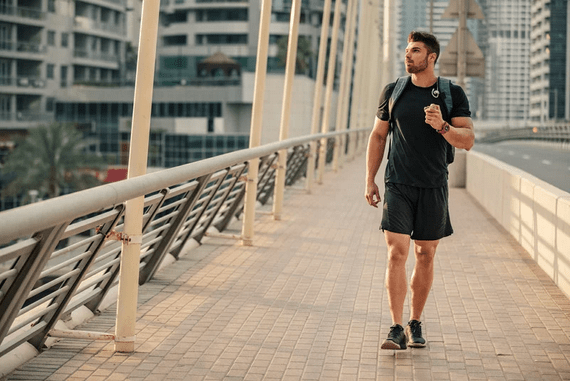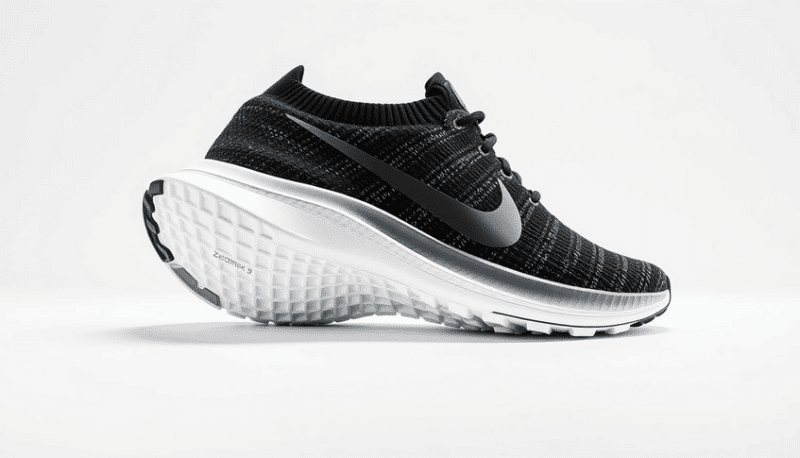In our fast-paced world, finding time for exercise can seem impossible. Walking is a simple yet effective way to incorporate physical activity into our daily routine without feeling overwhelmed. Transforming mundane activities like commuting or running errands into opportunities for walking can boost our physical and mental well-being.

Walking regularly not only helps us maintain a healthy weight but also strengthens our muscles and elevates our mood. Whether it's a quick stroll with the dog or a brisk walk during lunch, these moments add up and contribute to a healthier lifestyle. By making small changes, we can seamlessly integrate more walking into our busy schedules.
To get started, we can explore habits like parking farther from work or taking a quick walk during breaks. These adjustments can have a significant impact over time. Let's take this manageable step towards improving our health and enjoying the benefits it brings.
Key Takeaways
- Walking fits easily into our busy day.
- Regular walking boosts health and mood.
- Small walking changes lead to big health gains.
The Benefits of Walking
Walking holds surprising benefits for both our body and mind. By incorporating walking into our daily lives, we can improve our physical health, boost our mental well-being, and even positively impact the environment.
Physical Health Advantages
Walking is a powerful tool for enhancing physical health. Regular walking helps to lower LDL cholesterol, which is often called the "bad" cholesterol. It also helps us keep our blood pressure in check and strengthens our muscles. As we engage in brisk walking, we burn calories, promoting weight management and supporting a healthy lifestyle.
Frequent walking can reduce the risk of serious conditions like heart disease, stroke, and diabetes. It's an accessible exercise that requires just a good pair of shoes. By making walking a part of our routine, we enjoy long-term health benefits, paving the way for a healthier future.
Mental Well-Being Enhancement
Engaging in walking positively affects our mental health. Spending even a short time walking in nature can significantly reduce stress and negative emotions. This simple activity boosts our mood, fostering positive feelings and enhancing our energy levels.
Walking provides a chance to clear our minds, and it's especially effective at improving mental focus and creativity. The rhythmic movement of walking can be meditative, providing a unique way to process thoughts and relax. It's an activity that nourishes both our body and mind, contributing to a balanced lifestyle.
Environmental Impact
Walking is a fantastic way to be environmentally conscious. It reduces our carbon footprint by cutting down on the need for driving short distances. Opting for walking instead of using a car not only benefits our health but also leads to a cleaner environment.
When we choose walking over vehicles, we contribute to less air pollution and reduced traffic congestion. Encouraging walking can help create more walkable communities, leading to a better quality of life for everyone. By incorporating walking into our routine, we promote sustainability and positively impact the planet.
Integrating Walking into a Busy Schedule

Finding time to walk in a hectic lifestyle can be challenging, but with a few strategic adjustments, it's possible to make walking a regular part of our day. We will explore identifying opportunities to walk more and managing our time effectively.
Identifying Opportunities to Walk More
We can add more walking by incorporating it into activities we already do. Consider parking further from our destinations or choosing to walk during short errands. Taking the stairs instead of the elevator is another excellent way to increase our steps.
At work, walking during breaks can be refreshing. If we commute by public transportation, getting off a stop earlier and walking the rest of the way makes for an easy extra walk. Small choices build a healthier routine.
Strategies for Time Management
Managing our time makes walking more feasible, even with a packed schedule. Setting specific times for walks, like during lunch breaks or after dinner, can help us stay on track. Creating a walking habit by scheduling it on our calendars keeps us accountable.
Planning ahead also helps. Preparing for a walking commute by setting out shoes or clothes the night before can save us precious minutes in the morning. Prioritizing these small efforts connects us to a daily walking practice, proving that little changes lead to successful integration.
Walking Techniques and Posture

To get the most out of walking, it's important to focus on our technique. By improving our form, we can enhance our performance and avoid injuries. Efficient walking also involves incorporating techniques like interval training for better results.
Correct Walking Form
When we walk, maintaining good posture is key. We should stand tall with our shoulders back and relaxed. It's important to keep our heads up and look straight ahead, not at the ground. Engaging our core muscles helps us walk more efficiently and reduces strain on our bodies.
Our arms should swing naturally with each step. Keep them at our sides, bending at the elbows. This momentum can help propel us forward and maintain balance. Comfortable shoes with good support can make a big difference in our walking posture and prevent discomfort or injuries.
Maximizing the Walk with Interval Training
To enhance our walking routine, we can try interval training. This involves alternating between different paces, such as walking briskly for a few minutes and then returning to a normal pace. This variation can boost our cardiovascular fitness and make our walks more engaging.
Interval training can be tailored to fit our fitness level and schedule. For example, start with a one-minute fast walk followed by a two-minute regular pace, and adjust based on comfort and ability. This approach can efficiently increase our heart rate and burn more calories without requiring additional time.
Equipment and Safety

When adding more walking into our routines, it’s essential to prioritize safety and choose the right equipment. The key focus areas include picking suitable footwear, dressing for the weather, and planning our walking routes effectively.
Appropriate Footwear Selection
Choosing the right shoes is crucial for comfortable and safe walking. We should look for options that offer good support and cushioning. Shoes with a snug fit and adequate arch support help prevent feet from slipping inside the shoe.
We must also consider the walking terrain. For smooth pathways, regular athletic shoes might suffice. For uneven ground, shoes with better grip and ankle support are preferable to help avoid injuries.
Replacing worn-out shoes regularly is important since they lose their cushioning and support over time. This can lead to discomfort and even pain, particularly on long walks. Investing in good-quality footwear can make our walking experience more enjoyable and reduce the risk of injury.
Weather Considerations and Attire
Dressing according to weather conditions is essential for a comfortable walk. In warm weather, lightweight and moisture-wicking fabrics help keep us cool. Hats and sunglasses protect us from the sun's rays, and sunscreen is a must for skin protection.
In cooler temperatures, layering is key. Starting with a moisture-wicking base layer and adding insulating and windproof layers on top helps retain body heat. Wearing gloves and a hat can help keep us warm without overdoing it.
Rainy weather calls for waterproof clothing and slip-resistant shoes. Visibility might be reduced, so brightly colored or reflective clothing can help ensure we’re seen by others.
Navigational Tools for Route Planning
Effective route planning is vital for both enjoyment and safety. We can use GPS devices or smartphone apps to map routes and ensure we stay on track. These tools often provide information about paths' difficulty, distance, and elevation, allowing us to pick the most suitable ones.
Familiarizing ourselves with the chosen route can help avoid surprises. Identifying rest stops, water sources, and bathrooms along the way adds convenience and safety.
In unfamiliar areas, carrying a physical map or a downloaded map on a phone can be helpful if technology fails. Being prepared with the right tools makes our walks smoother and more enjoyable.
Monitoring Progress and Staying Motivated

To ensure success in incorporating walking into our daily lives, we need to set achievable goals and track our progress. These steps can help us stay motivated and committed to making walking a consistent part of our routines.
Setting Realistic Goals
Setting realistic goals is crucial for maintaining our walking routine. This means being honest about our current fitness levels and lifestyle. We can start by deciding on specific targets, like increasing our step count by 1,000 steps each week or extending the duration of our walks gradually.
To help us stay on track, let's consider using the SMART criteria: Specific, Measurable, Achievable, Relevant, and Time-bound. This approach allows us to set clear and attainable goals. For example, "I will walk for 30 minutes every morning for the next month." This gives us a clear target and a timeframe, making it easier to track our progress.
Tracking Milestones and Achievements
Tracking our milestones and achievements is another key element. This can be done using a simple notebook or a digital app. Recording daily steps, distance covered, or the time spent walking provides a visual reminder of our progress.
We can also create a checklist to mark each day we meet our walking target. Seeing these accomplishments boosts our motivation and encourages us to stick with the routine.
Celebrating small wins is essential too. Recognizing and rewarding ourselves when we reach milestones helps keep motivation levels high. Whether it's a special treat or a rest day, these rewards encourage ongoing commitment to our walking routine.



